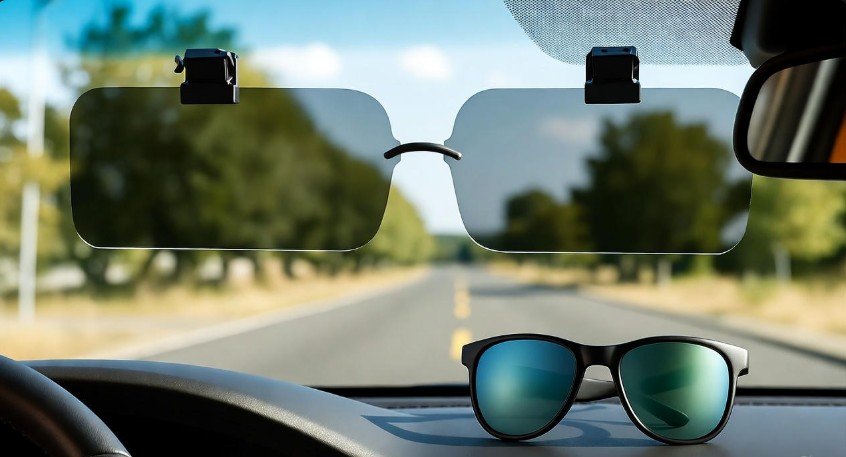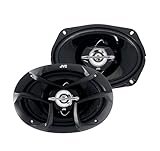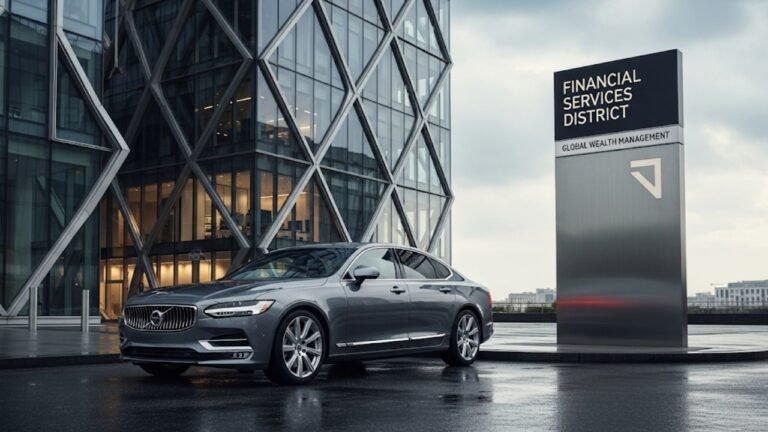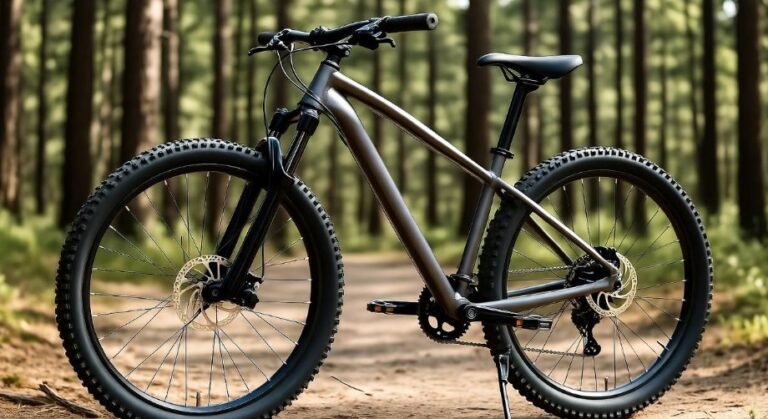7 Anti Glare for Car Windshield Solutions That Work

Find the best 7 anti glare for car windshield solutions that work to improve visibility and drive safely on sunny days.
Key Takeaways
- Shield your eyes from blinding sun with proven anti-glare methods.
- Explore DIY and professional options for a clearer view.
- Protect your car’s interior from damaging UV rays.
- Enhance driving safety by reducing sun glare.
- Choose solutions that fit your budget and needs.
- Maintain a clear windshield for optimal road awareness.
Driving in the bright American sun can be a challenge, especially when glare off your car windshield makes it hard to see. This isn’t just an annoyance; it’s a serious safety concern that can lead to accidents. You might be wondering what you can do to combat this blinding effect. This guide will explore seven effective anti-glare solutions for your car windshield, making your drives safer and more comfortable. Let’s dive into how you can achieve a clearer view of the road ahead.
Understanding the Problem: Why Car Windshield Glare Happens
Car windshield glare is a common issue, particularly during sunrise and sunset or on particularly sunny days. It occurs when light reflects off the surface of your windshield, creating a blinding sheen that obscures your vision. Several factors contribute to this phenomenon. First, the angle of the sun plays a significant role. When the sun is low on the horizon, its rays hit the windshield at a more direct angle, increasing the intensity of the reflection. Second, the condition of your windshield matters. A dirty, scratched, or damaged windshield can scatter light more effectively, exacerbating glare. Tiny particles of dust, dirt, oil, and even water spots on the glass can create countless tiny reflective surfaces. Finally, the type of glass used in your windshield can influence how much glare you experience. Some automotive glass treatments may also affect light reflection.
The consequences of severe glare can be dire. Studies by organizations like the National Highway Traffic Safety Administration (NHTSA) highlight that reduced visibility is a contributing factor in many traffic accidents. When you can’t see pedestrians, other vehicles, or road hazards clearly, your reaction time is significantly reduced, increasing the risk of a collision. This makes finding reliable anti-glare solutions not just a matter of comfort, but a critical aspect of responsible driving.
7 Anti Glare for Car Windshield Solutions That Work
Fortunately, there are numerous ways to combat windshield glare. These range from simple, low-cost methods to more advanced, professional treatments. We’ve compiled a list of seven effective solutions to help you see the road clearly, no matter the sun’s intensity.
1. Windshield Cleaning and Maintenance: The Foundation of Clear Vision
Before exploring more advanced options, it’s essential to address the basics. A clean windshield is your first line of defense against glare. Dirt, dust, oil films from exhaust fumes, and old wax or residue can all contribute to light scattering and reflection. Regular, thorough cleaning can make a significant difference.
How to Clean Your Windshield Effectively
- Gather your supplies: A good quality glass cleaner (ammonia-free is often recommended for tinted windows), microfiber cloths (at least two – one for cleaning, one for drying/polishing), and a bucket of clean water.
- Pre-rinse: If your windshield is very dirty, rinse it with water first to remove loose debris.
- Apply cleaner: Spray the glass cleaner onto one section of the windshield at a time, or onto your cleaning cloth.
- Wipe in a pattern: Use a clean microfiber cloth to wipe the glass in a consistent pattern, such as side-to-side or up-and-down, to avoid missing spots and to ensure even coverage.
- Buff dry: Immediately use a second, dry microfiber cloth to buff the glass until it’s streak-free.
- Don’t forget the edges: Pay attention to the edges of the windshield where dirt can accumulate.
Maintaining your windshield wiper blades is also crucial. Worn-out blades can leave streaks and water spots, further impairing visibility. Replace them annually or whenever you notice streaking or chattering.
2. Polarized Sunglasses: Your Personal Glare Shield
Perhaps the simplest and most immediate solution for drivers experiencing glare is wearing polarized sunglasses. Polarized lenses work by filtering out horizontally polarized light, which is the type of light that causes glare. When sunlight reflects off a flat, horizontal surface like a road, water, or your car’s hood, it becomes polarized horizontally. Polarized sunglasses have a special filter that blocks this horizontal light, allowing you to see more clearly and with reduced eye strain.
Benefits of Polarized Sunglasses for Driving:
- Reduce eye fatigue and headaches.
- Improve contrast and visual clarity.
- Enhance the perception of colors.
- Make it easier to see road details like lane markings and hazards.
When choosing polarized sunglasses for driving, opt for shades of grey, amber, or brown. These colors offer good color recognition and contrast. Avoid very dark or mirrored lenses, as they can reduce overall light transmission too much, potentially hindering vision in lower light conditions. It’s also wise to have a pair specifically for driving, as not all sunglasses are polarized.
3. Detachable Sunshades and Visors: Instant Shade on Demand
For parked cars, or even while driving, detachable sunshades and visors can offer immediate relief from direct sunlight. These come in various forms:
Types of Detachable Sunshades and Visors:
- Windshield sunshades (for parked cars): These are typically reflective shades made of Mylar or similar material that unfold to cover the inside of the windshield. They are excellent for reducing interior heat buildup and preventing sun damage to your dashboard and upholstery. While primarily for parked cars, some can offer a slight reduction in ambient light entering the cabin.
- Clip-on Visors: Some innovative products are designed to clip onto your existing car visor or directly onto the windshield’s edge. These can extend your primary visor’s coverage or provide an additional layer of shade directly in your line of sight.
- Roll-down Tinted Visors: These are often integrated into the top edge of the windshield or can be installed as an add-on. They roll down when needed to block the sun’s direct rays without obstructing your primary view.
While these offer effective shade, always ensure that any visor or shade used while driving does not obstruct your view of the road, traffic signals, or signs, as this can create a dangerous driving hazard and may be illegal in some U.S. states. Always check your local driving laws regarding such accessories.
4. Automotive Window Films (Tinting): A Permanent Solution
Window tinting is a popular and effective method for reducing glare and its associated problems. Automotive window films are applied to the interior surface of your car’s windows, including the windshield. These films are designed to block a significant percentage of solar radiation, including visible light (glare), ultraviolet (UV) rays, and infrared heat.
Benefits of Window Tinting:
- Glare Reduction: Tint dramatically reduces the amount of light that passes through the glass, minimizing glare.
- UV Protection: Most quality tints block 99% of harmful UV rays, protecting your skin and preventing your car’s interior from fading and cracking.
- Heat Reduction: Tinting can significantly lower the interior temperature of your car, making it more comfortable and reducing the need for air conditioning.
- Privacy and Security: Tinted windows offer increased privacy, making it harder for passersby to see into your car. They can also help hold shattered glass together in the event of an accident.
It’s crucial to be aware of the legal tinting laws in your state. Many U.S. states have specific regulations regarding the VLT (Visible Light Transmission) percentage allowed on windshields and side windows. For example, some states prohibit any tint on the front windshield, while others allow a small strip at the top. Always consult your local Department of Motor Vehicles (DMV) or equivalent authority for the most current regulations. Reputable tint shops will be knowledgeable about these laws.
You can research state tint laws at official government websites, such as those provided by state legislatures or transportation departments. For instance, a search for “[State Name] car window tint laws” will usually lead you to the relevant government page.
Types of Window Films:
| Type of Film | Description | Pros | Cons |
|---|---|---|---|
| Dyed Film | Color is dyed into the film itself. Affordable. | Reduces glare, offers some UV protection, inexpensive. | Can fade over time, offers minimal heat rejection, can bubble. |
| Metalized Film | Contains tiny metal particles that reflect heat and light. | Good heat and glare reduction, durable, offers some privacy. | May interfere with GPS/radio signals, can have a shiny appearance. |
| Carbon Film | Uses carbon particles to absorb and block heat. | Excellent heat and glare reduction, non-reflective, durable, won’t interfere with signals. | More expensive than dyed or metalized films. |
| Ceramic Film | Contains ceramic particles that reject heat without blocking signals. | Superior heat and glare rejection, excellent UV protection, no signal interference, long-lasting. | Most expensive option. |
5. Anti-Glare Windshield Coatings: Invisible Protection
Beyond permanent tinting, there are temporary and semi-permanent anti-glare coatings you can apply to your windshield. These are often liquid or spray-on solutions that create a transparent layer on the glass designed to reduce reflections and improve clarity.
How Coatings Work:
These coatings typically work by altering the surface tension of the glass or by adding a microscopic layer that diffuses light slightly, reducing the sharp, direct reflection that causes glare. Some advanced coatings also offer hydrophobic properties, meaning they repel water, which can further improve visibility during rain and reduce the drying time after washing, preventing water spots that contribute to glare.
Application Methods:
- Spray-on Waxes/Treatments: Similar to applying wax to paint, some products can be sprayed onto the windshield and buffed off. These offer a temporary solution, usually lasting a few weeks to a few months, depending on the product and exposure.
- Liquid Applicators: These come in a liquid form and are applied with a foam applicator. They often offer a slightly longer lifespan than spray-on options.
- Professional Coatings: Some detailers offer specialized anti-glare or glass sealant treatments that can last for six months or more.
When choosing a coating, read reviews carefully, as the effectiveness and durability can vary widely. Look for products specifically marketed for anti-glare properties and ease of application. Always follow the manufacturer’s instructions precisely for best results.
6. Windshield Treatments for Hydrophobicity: Repelling Water and Dirt
While not directly marketed as “anti-glare” solutions, hydrophobic treatments for your windshield significantly contribute to reducing glare, especially in wet conditions. Hydrophobic literally means “water-repelling.” When applied to glass, these treatments cause water droplets to bead up and roll off the surface easily, much like water on a waxed car. This is incredibly beneficial for driving safety.
How Hydrophobic Treatments Help with Glare:
- Reduced Water Streaks: During rain or when water splashes onto your windshield, it beads up instead of forming a sheet of water. This dramatically reduces streaks left by wipers and prevents the water from spreading out into a reflective film.
- Easier Cleaning: Dirt, bug splatters, and grime have a harder time adhering to the treated surface. When they do, they are much easier to wipe away with less residue, meaning fewer particles to scatter light and cause glare.
- Improved Wiper Performance: Water rolls off quickly, meaning your wipers have less work to do and are more effective at clearing the remaining moisture.
Many of the anti-glare coatings mentioned in the previous section also offer hydrophobic properties. Popular products include Rain-X, although many professional-grade ceramic coatings also provide excellent water repellency and can last much longer.
Pro Tip: For optimal performance of hydrophobic treatments and window tint, ensure your windshield is thoroughly cleaned and dry before application. Consider using a clay bar to remove any embedded contaminants for a perfectly smooth surface.
7. Specialized Anti-Glare Windshield Replacements: The Ultimate Fix
In cases where a windshield is severely damaged, scratched, or old, replacement might be the most effective long-term solution for glare reduction. Manufacturers are increasingly incorporating advanced technologies into automotive glass. Some newer windshields come with built-in features designed to minimize glare and enhance visibility.
Features to Look For in Advanced Windshields
- Blue-Tinted or Green-Tinted Top Band: Many modern windshields have a subtle tint applied to the top portion. This band serves to reduce the intensity of sunlight when it’s high in the sky or entering at an angle, offering a form of built-in glare reduction without compromising overall visibility.
- Advanced Glass Coatings: Some premium vehicles come with windshields featuring advanced multi-layer coatings. These coatings are engineered to reflect specific wavelengths of light and heat, effectively reducing glare, UV penetration, and solar heat gain.
- Laminated Glass Properties: While standard for windshields in the US, the lamination layer in all automotive glass is designed to reduce light scattering compared to monolithic glass. Ensuring your replacement is high-quality laminated glass is key.
If your current windshield is heavily pitted, scratched from years of use, or has delamination issues (where the layers of the glass begin to separate), replacing it with a new, high-quality unit is a worthwhile investment. This not only resolves glare issues but also restores the structural integrity of your vehicle, a critical safety feature. The National Glass Association (NGA) provides resources for consumers about auto glass replacement and safety standards.
Comparative Table of Anti Glare Solutions
To help you choose the best option, here’s a comparison of the anti-glare solutions discussed:
| Solution | Primary Use | Effectiveness vs. Glare | Cost Range (Low to High) | Durability | Ease of DIY |
|---|---|---|---|---|---|
| Windshield Cleaning | Everyday visibility, basic glare reduction | Low to Medium | $ | Temporary (until next dirt accumulation) | High |
| Polarized Sunglasses | Driver’s personal vision | High (for driver’s direct view) | $$ | Long-term (as long as lenses are intact) | High |
| Detachable Sunshades/Visors | Parking and temporary driving shade | Medium (for parked car), Low (while driving) | $$ | Medium (material wear) | High |
| Window Films (Tinting) | Permanent glare, UV, and heat reduction | High | $$$ | Very High (5+ years) | Low (professional installation recommended) |
| Anti-Glare Coatings | Temporary to semi-permanent glare and water repellency | Medium to High | $$ – $$$ | Low to Medium (weeks to months) | Medium |
| Hydrophobic Treatments | Water and dirt repellency, indirect glare reduction | Medium (especially in wet conditions) | $$ | Low to Medium (weeks to months) | Medium to High |
| Windshield Replacement | Permanent solution for damaged/old glass | Very High (if new glass has features) | $$$$ | Very High (lifespan of vehicle) | Very Low (professional installation required) |
Frequently Asked Questions About Anti Glare for Car Windshield
Is it legal to tint my entire windshield?
Legality varies by state in the USA. Many states prohibit tinting the entire windshield, while others allow a strip at the top. Always check your state’s specific regulations, as driving with illegal tint can result in fines. You can typically find this information on your state’s DMV or Department of Transportation website.
How often should I clean my car windshield for optimal visibility?
For best results, clean your windshield thoroughly at least once a week, or more often if you notice dirt or streaking. Don’t forget to clean the inside as well, as interior grime and off-gassing from the dashboard can also cause glare.
Can a dirty windshield actually cause glare?
Yes, absolutely. A dirty windshield refracts and scatters light in unpredictable ways. Dust, oil films, water spots, and road grime all create small imperfections on the glass surface that can turn direct light into blinding glare.
What’s the difference between anti-glare coatings and window tinting?
Window tinting is a film applied to the glass that permanently alters its light transmission properties. Anti-glare coatings are typically liquid or spray treatments applied to the surface for temporary or semi-permanent protection, often with added benefits like water repellency.
Are polarized sunglasses effective for all types of car windshield glare?
Polarized sunglasses are most effective against glare that reflects off horizontal surfaces. They work exceptionally well against glare bouncing off the road and your dashboard. While they help reduce overall light intensity, they don’t directly alter the windshield itself.
If my windshield is cracked, can I still apply an anti-glare coating?
It’s generally not recommended to apply coatings, especially permanent ones like tint, over a cracked windshield. The crack will likely worsen, and the coating can interfere with proper repair or replacement. For cracked glass, replacement is the safest and most effective solution.
Can I use regular household cleaners on my car windshield?
For interior windshield cleaning, avoid ammonia-based cleaners if you have tinted windows, as ammonia can damage some tint films. For exterior cleaning, a dedicated automotive glass cleaner is usually best, as it’s formulated to cut through road grime effectively without harming paint or trim.
Conclusion
Driving safely in the USA means ensuring you have clear visibility at all times, and battling windshield glare is a key part of that. From the simple yet effective method of regular cleaning and using polarized sunglasses to more advanced solutions like professional window tinting and specialized coatings, there are numerous ways to enhance your view of the road. Implementing one or a combination of these 7 anti-glare for car windshield solutions that work will not only make your driving experience more comfortable but, more importantly, significantly improve your safety and the safety of others on the road. Choose the solution that best fits your needs and budget, and enjoy clearer, safer drives.






